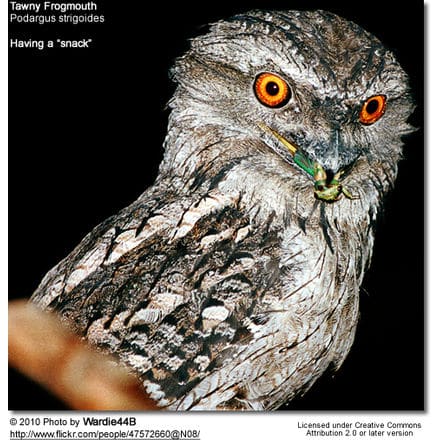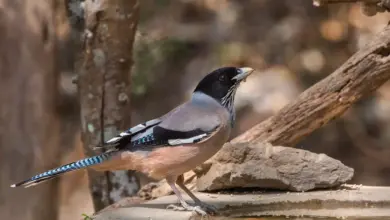Silvery or Grey Wood-pigeons
The Silvery Pigeons (Columba argentina), also known as Silvery or Grey Wood-pigeon is a species of Pigeon that may have gone extinct in the 20th century.
Description
It is not distinguishable from the Pied Imperial-pigeon (PIP) from a distance, although this needs not to be true vice-versa: as the PIP can vary between a pale grey, pure white, and even yellowish coloration, it is often possible to tell that a bird is not a C. argentina. At close quarters, the Silvery Pigeons may be recognized by a few characteristics: The plumage is always a pale silvery grey, with black remiges (flight feathers – typically only visible in flight) and ends of the tail feathers; there may be a slight greenish sheen on the feathers of the backsides of the neck. The black part of the tail is equal in length in all feathers, whereas it forms a black triangle pointing headwards on the underside of the PIP’s tail. Most distinguishing characteristics are located on the head, which is shaped differently, with a sloping forehead (rounded in the PIP), conspicuous dark red or purplish eye-wattles (none in the PIP) and eyes, and a bill that is darker at the base (lighter at the base in the PIP), being dusky purple with a pale apple-green tip. The feet are bluish-grey, mottled with varying amounts of red. The birds are slightly smaller than the PIP, with a total length of around 37 cm, females being marginally larger and darker than males on average, and juvenile birds are apparently more sandy-colored on the upperpart feather fringes and breast. While the weight was never recorded,comparison with related species gives an estimate of 350 grams on average. The color pattern, unusual for a Columba pigeon, probably represents convergent evolution towards the PIP, and possibly even a case of Müllerian mimicry, the anti-predator attribute being the PIP’s habit to aggregate in large flocks which makes it harder for predators to pick out individual birds, and enables the much rarer Silvery Pigeon to share this advantage.
Distribution
This species was recorded during the late 19th and early 20th century from offshore islands of the Natuna Sea (west of Borneo) and west of Sumatra, Indonesia, and on the adjacent mainland. The oldest record is that of a specimen supposedly taken near Pontianak before 1850. Verifiable records exist from Burong Island, Sarawak (1899), Saya in the Lingga Islands (same year), Simeulue (e.g. Teluk Dalam and Teluk Labuan Bajau, 1901), South Pagai (1902) and Sipura in the Mentawai Islands, the Riau Islands (several times), Tuangku Airdingin (1913), Jemaja Andriabu in the Anamba Islands (1925), the North Natuna Islands (1928), and in Sumatra’s Jambi and possibly South Sumatra provinces. The last certain records are from Bintan in the Riau Islands (June 1930) and Pulau Gurungan Besar in the Karimata islands (March 1931) and (unconfirmed, before 1937) from Pulau Jarak in the Straits of Malacca.
Ecology
It is known from mangrove forests and other woodland in the low-lying offshore islands and adjacent coastal regions, at an altitude below 100 m ASL. It is believed to wander around following fruit in season, and was often found in association with much larger flocks of the Pied Imperial-pigeon. It also breeds in these birds’ nesting colonies, probably over a period of several months from March/April on. It builds a flimsy stick nest in and lays a single white egg, which has a chalky, not glossy shell (as opposed to that of the PIP).
Current status
This species has been classified as Critically Endangered (D1) by BirdLife International, translating into an estimated population of less than fifty mature individuals. This is based on a lack of confirmed sightings, however, and thus the species may actually be more common and simply not identified. Following the rule-of-thumb “no confirmed sightings for 50 years”, the species could theoretically be considered extinct, but using the precautionary principle, it is instead classified as critically endangered because it is under most conditions not identifiable with any certainty in the field and although no recent verified records exists, there are some promising recent reports.
The reasons for the bird’s apparent decline are not well known. While deforestation, especially the removal of mangrove forests, certainly adversely affects this bird, it is not known to have started on a massive scale at such an early date. Similiarly, introduction of alien predators (like cats that become feral) will jeopardize breeding on offshore islets, but this is also not believed to have been significant at the time the records ceased. At any rate, the species is not found anymore on Burong, Simeulue, the Mentawi and the Riau Islands today.
There are some 1980s and 1990s records, supposely of large numbers of individuals, from Padang-Sugihan Wildlife Reserve and Sembilang River in South Sumatra, and Berbak National Park in Jambi province. It is conjectured that the bird may exist, possibly in considerable numbers, in South Sumatra, especially the Banyuasin peninsula, or Padang-Sugihan Wildlife Reserve. None of these records has been verified, however, and the species was never considered to be particularly numerous, especially when compared to the PIP. Most recently, the Silvery Pigeon was believed to have been seen on Pulau Talang Besar, Talang Talang Islands (part of Talang-Satang National Park), in 2001 (Wilson, 2004). Butchart et al. (2006) also mention an unconfirmed record in 2002.
Considerable mystery surrounds the origin and circumstances of this image, found on a Czech aviculture website. It shows what can be identified as two Silvery Pigeons (compare the heads to that of the PIP here) in an aviary. The birds do not appear ringed, and the date the photograph was taken is unknown. It does not seem to be a colorized black-and-white image, but judging from the quality, it could theoretically have been taken anytime between the mid-20th century and the present day, though most possibly in the 1970s or 1980s. Nothing more can be inferred from this piece of evidence except that at some unkown date in the latter half of the 20th century, the species was not only extant, but at least 2 birds were kept in captivity somewhere.



